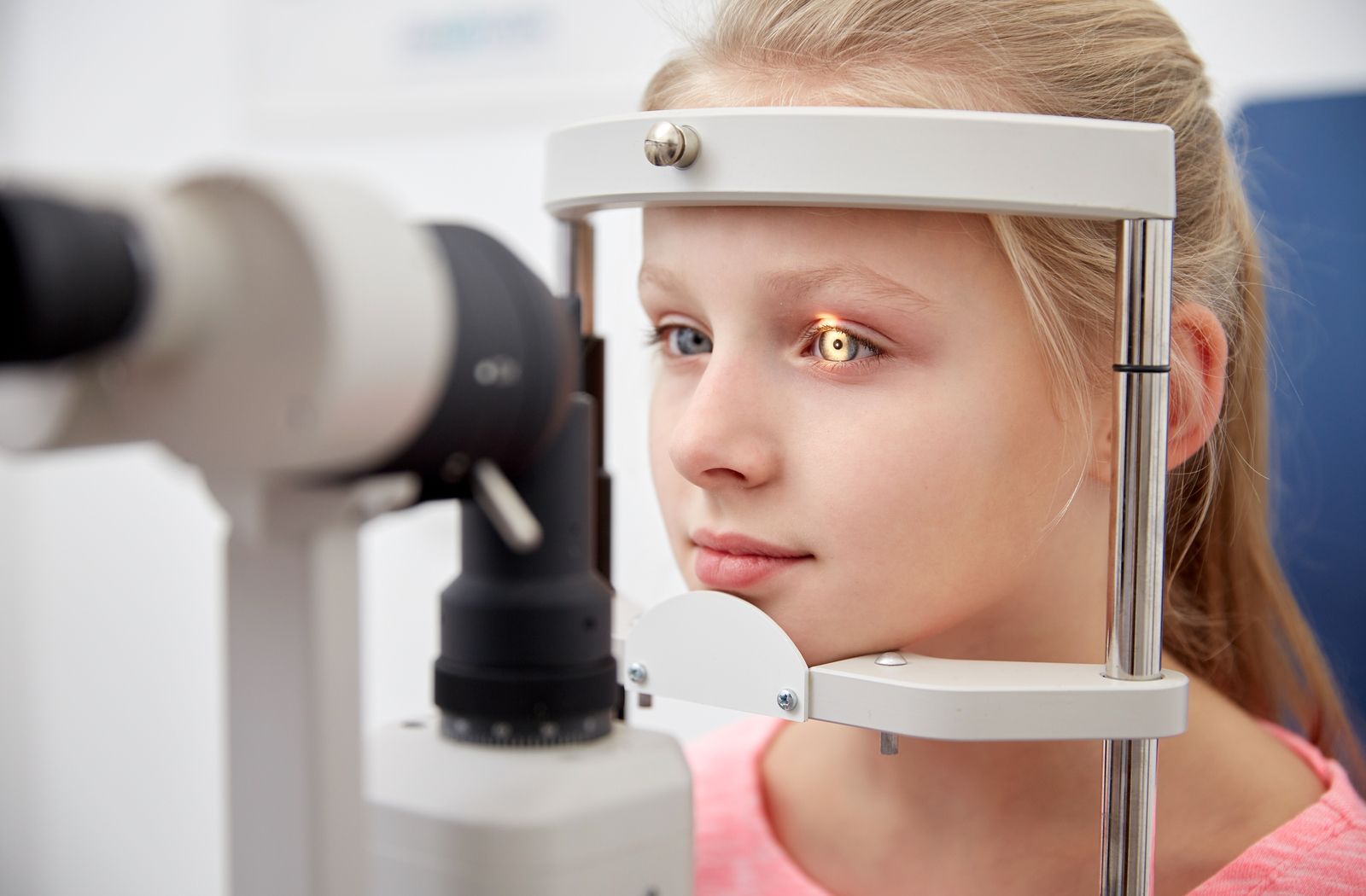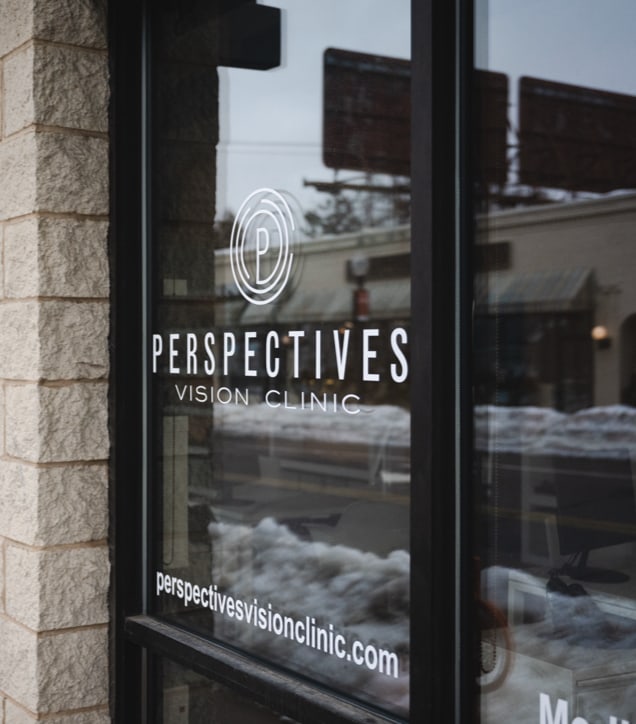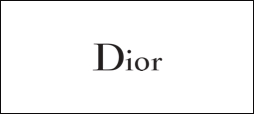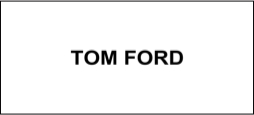Oh, the joys of childhood.
There is nothing quite like watching your child experience new things for the first time. In a way, it’s like experiencing these things for the first time yourself, and the perspective they have could bring a fresh new outlook on what you may already take for granted.
From imagining front lawn dinosaur zoos to taking a pillow-fort spaceship to the final frontier, your child’s vision is at the forefront of how they learn, play, and interact with the world around them. In fact, 80% of your child’s learning happens visually!
Supporting your child’s vision is an essential part of their health care routine, but it can be difficult to know when to take your child for an eye exam or spot issues affecting their vision. Today, we’re going to look at your child’s eye exam frequency, the common issues children can develop as they grow up, and the signs you can look for to help address potential problems.
If you’re looking for help with specific issues affecting your child’s vision, be sure to get in touch with us or book an appointment with us today!
What You Should Know Now
The first thing you should know is when to take your child for an eye exam.
Your child’s eyes and vision are still developing for the first few years of life, and they gradually depend on their vision more as they grow older. Having an eye exam during this time can help spot potential issues before they can permanently affect your child’s vision. Still, different problems can develop at different stages of your child’s eye development.
To help us best support your child’s vision and eye development, we recommend having an eye exam:
- At least once between 6 and 12 months of age
- At least once between ages 3 to 5 years of age
- Once before the first grade and every year after that
We may alter your child’s eye exam frequency to help manage potential eye and vision problems should they arise.
Your Child’s Eye Development
While your child’s eyes mature, they may also develop specific issues that could affect their vision as they grow older. Because of this, it’s important to know a little about your child’s eye development and the various issues that may develop at certain points in their life.
Of course, every child is different. The risk of developing these issues varies significantly between children, but following the exam schedule from earlier could help detect these issues as early as possible.
Birth to 2 Years
During the earliest stages of your child’s eye development, their vision is quite limited. They may respond to high contrasted targets, but for the first few months, they’re simply learning how to use both eyes together.
During this time, it’s possible for your child’s eyes to look misaligned or as if one eye is wandering. This is typically normal in the early stages of eye development, but it could still be a sign of amblyopia or strabismus. Your child’s first eye exam can help determine if they’re developing these issues.
2 Years to 5 Years
Visual skills like depth perception, eye-hand coordination, and color vision should develop by the time your child reaches 2 years old. These skills will help them navigate their environment, support their ability to walk, and help them interact with colors and objects.
During your child’s time in preschool, they’re fine-tuning their visual skills to help them read, write, and draw. Issues like amblyopia and strabismus commonly develop around this age, affecting their eye alignment and several visual skills. Having an eye exam around this period in their life can help our team address these problems.
6 Years & Up
From the time your child enters school to the time they graduate, we recommend having annual eye exams.
While your child’s vision may be supporting them, one of the main issues children can develop between the ages of 6 and 18 is a refractive error—particularly, myopia. If your child has developed an eye or vision problem, it could affect their school grades and confidence in taking up sports and hobbies.
A great idea would be to book an eye exam at least once before school starts every year to ensure their vision is getting the support it needs.
Common Eye Problems for Children
Now that we’ve looked at how your child’s eye develops, let’s glance at the most common eye problems that can affect your child.
Myopia
Myopia, also known as nearsightedness, is one of the most common refractive errors children can develop while attending school.
It affects about 30% of children, with some studies suggesting it could affect about 50% of the entire world by 2050. Because of its prominence, we offer a comprehensive Myopia Control service to help manage the issue using multifocal lenses.
As your child grows up, their eyes grow with them. However, if their eyes grow too long or their cornea too steep, light entering their eye will have difficulty focusing on their retina, leading to blurry distance vision. Myopia can progress throughout your child’s life, sometimes up to the age of 20. In high myopia cases, your child may have a risk of developing certain eye diseases or experiencing retinal detachment.
Amblyopia
Amblyopia, commonly referred to as lazy eye, is an eye condition characterized by a single wandering or misaligned eye.
Uncorrected refractive errors could cause amblyopia, but your child could have a higher risk of developing the issue if they have a family history of the condition or if they’re born prematurely.
While it is normal for some babies to have slightly misaligned eyes, it’s still important to have the issue checked by our optometrist. Amblyopia, without treatment, could lead to various vision problems or even cause the brain to ignore images from their “weaker” eye.
Strabismus
Strabismus, more commonly known as crossed eyes, is an eye condition that affects the alignment of both eyes.
Like amblyopia, some babies may look like they have strabismus early in their life, but this is normal to their eye development. Taking your child in for regular eye exams can help manage or correct the issue before it causes permanent problems.
Also like amblyopia, uncorrected refractive errors and a family history of the condition could increase its risk of developing. However, it may also develop if muscles controlling your child’s eye movement are underdeveloped, or there is an issue with how your child’s brain communicates with their eye and eye muscles.
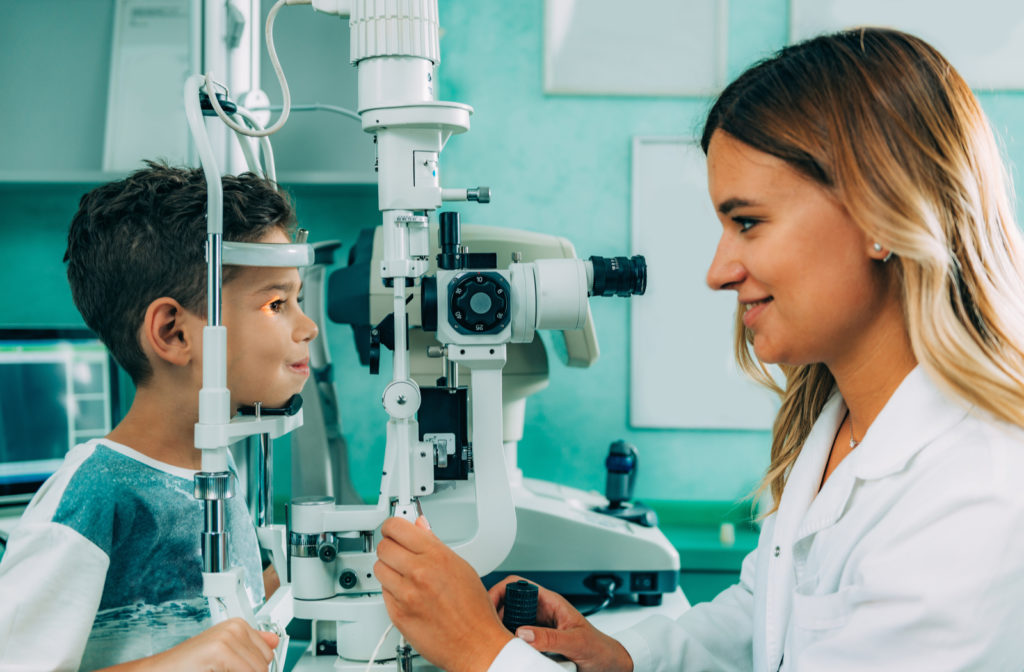
If You Notice an Issue, Book an Eye Exam
Sometimes, it might be hard for your child to communicate that they have an eye or vision problem. They could be too young to understand the issue they have, or they simply might not be aware of the issue at all.
Vision problems can affect your child in various ways, but you could spot certain signs just by paying attention to their behavior. Your child might have an eye problem if they:
- Rub their eyes excessively.
- Struggle with headaches.
- Have problems achieving the grades they want.
- Tilt their head or cover an eye to see certain things.
- Are sensitive to light.
If you notice any of these issues, it might be time to book an eye exam. Our team can help get to the bottom of what may be causing your child’s symptoms and provide personalized strategies to help your child see and feel their best.
